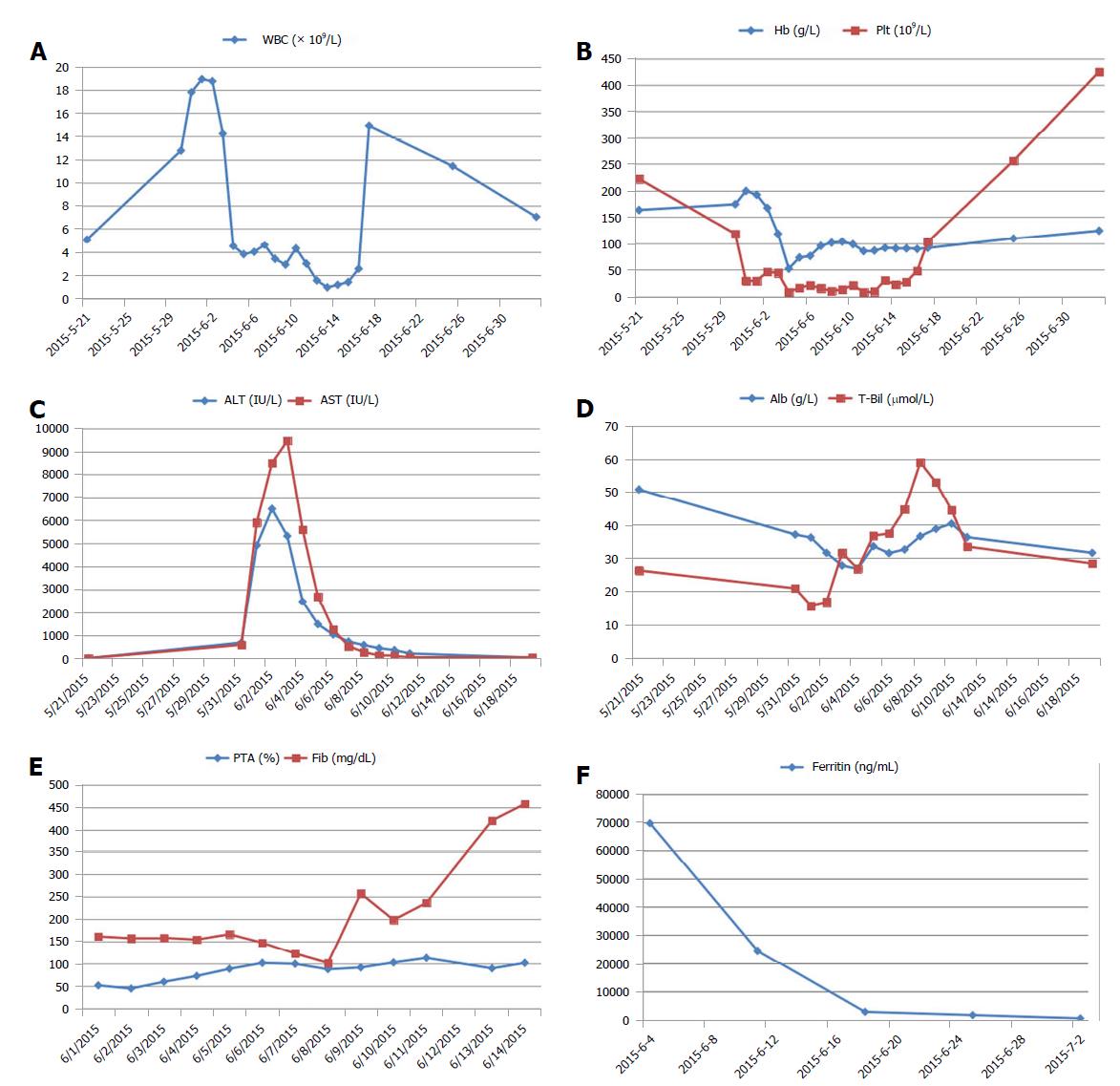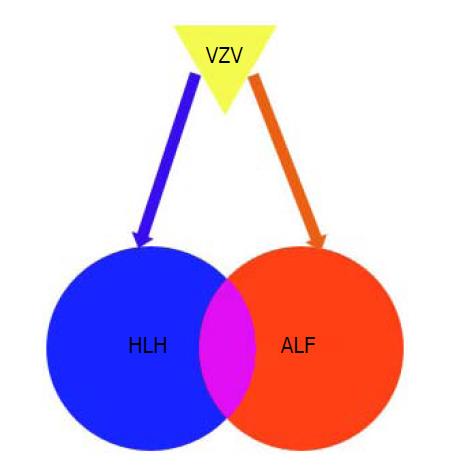Copyright
©The Author(s) 2018.
World J Clin Cases. Nov 6, 2018; 6(13): 659-665
Published online Nov 6, 2018. doi: 10.12998/wjcc.v6.i13.659
Published online Nov 6, 2018. doi: 10.12998/wjcc.v6.i13.659
Figure 1 Skin manifestations.
A, B, C: On admission (June 1st), the patient had rashes on the face (A) and trunk (B), with various stages of development including maculopapules, vesicles, pustules, and crusts; extensive ecchymosis was seen on the lower abdomen and thighs (C); D, E, F: On June 10, ecchymosis had greatly resolved (F); On June 19, skin rashes on the face had mostly regressed (D); leaving no scar; and rashes on the trunk eventually crusted over (E).
Figure 2 Curves of evolving laboratory values.
A, B: On May 21, the patient had a normal white blood cell count (WBC), hemoglobin (Hb), and Plt count before disease onset. On May 31, he had thrombopenia, 4 d after the onset of the skin rash. Sudden and unexpected pancytopenia occurred on June 4. Two doses of dexamethasone (20 mg) and etoposide (150 mg/m2) were administered on June 5, and June 8, respectively. Granulocyte colony stimulating factor was used to treat etoposide-induced agranulocytosis from June 13 to June 15. The WBC, hemoglobin and Plts eventually returned to normal; C: The alanine aminotransferase (ALT) and aspartate aminotransferase (AST) soared on June 1st, though intravenous acyclovir had been started at a dose of 10 mg/kg/d from May 31 to June 2. Then acyclovir was increased to 10 mg/kg every 8 h (June 3 to June 12). The liver enzymes reached a maximum (ALT 6499 U/L, AST 9458 U/L) on June 3 and then declined quickly; D: The T-Bil rose gradually, reaching a maximum of 59 μmol/L on June 8. Total bilirubin (T-Bil) continued to improve thereafter. Alb declined concurrent with the progression of ALF, and was elevated with multiple infusions of albumin; E: Prothrombin activity (PTA) was reduced to 45% when ALF occurred, and was partially ameliorated by infusions of fresh-frozen plasma. Fib decreased markedly, with a lowest level of 102 mg/dL, despite multiple infusions of fib. After a second dose of dexamethasone and etoposide on June 8, fib started to improve steadily. F: An extremely high level of serum ferritin was noted to accompany the onset of pancytopenia. It dropped dramatically once treatment had taken effect. WBC: White blood cell count; Hb: Hemoglobin; Plt: Platelet; ALT: Alanine aminotransferase; AST: Aspartate aminotransferase; T-Bil: Total bilirubin; Alb: Albumin; ALF: Acute liver failure; PTA: Prothrombin activity; Fib: Fibrinogen.
Figure 3 Inferred links between varicella infection, acute liver failure and hemophagocytic lymphohistiocytosis.
In the present case, varicella-zoster virus (VZV) was identified as a causative agent for acute liver failure (ALF). Meanwhile, hemophagocytic lymphohistiocytosis (HLH) triggered by VZV infection may, in turn, have contributed to the progression of ALF. Accumulating evidence pointed towards a similar immune dysregulation pattern in ALF and HLH. It may be inferred that at least a subset of ALF cases may manifest with the HLH spectrum in a shared pathophysiology predominantly affecting the liver. VZV: Varicella-zoster virus; HLH: Hemophagocytic lymphohistiocytosis; ALF: Acute liver failure
- Citation: Zhang LN, Guo W, Zhu JH, Guo Y. Successful rescue of acute liver failure and hemophagocytic lymphohistiocytosis following varicella infection: A case report and review of literature. World J Clin Cases 2018; 6(13): 659-665
- URL: https://www.wjgnet.com/2307-8960/full/v6/i13/659.htm
- DOI: https://dx.doi.org/10.12998/wjcc.v6.i13.659











